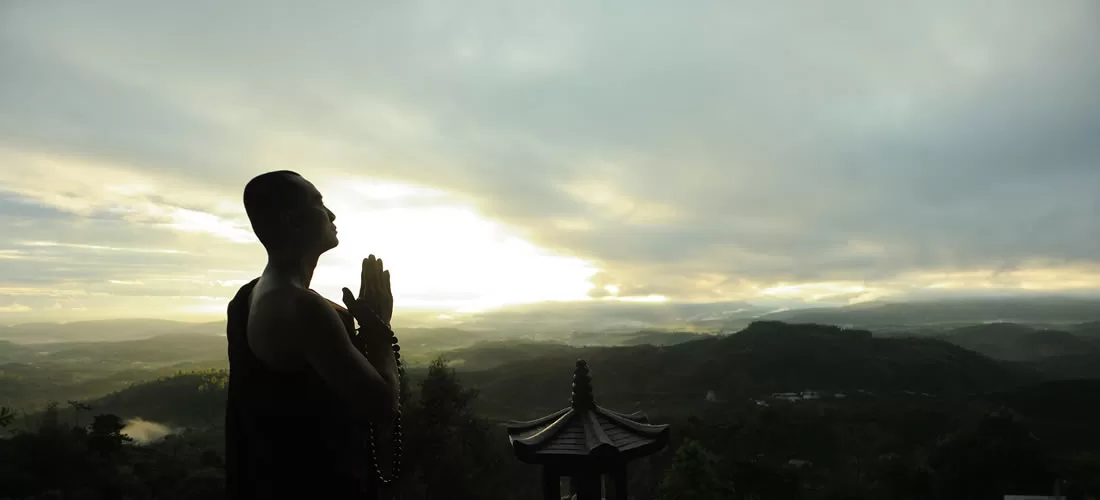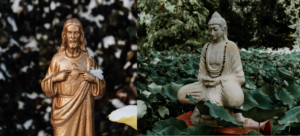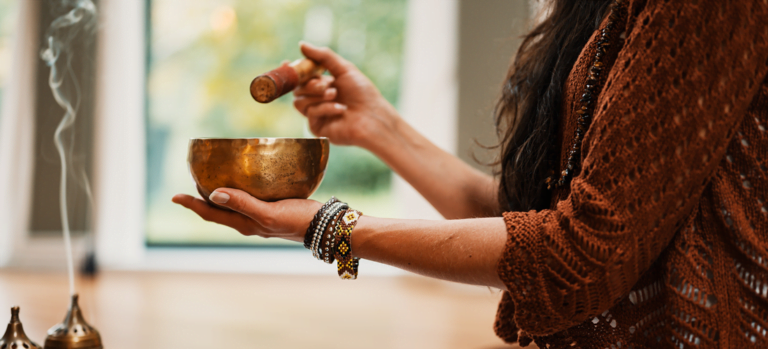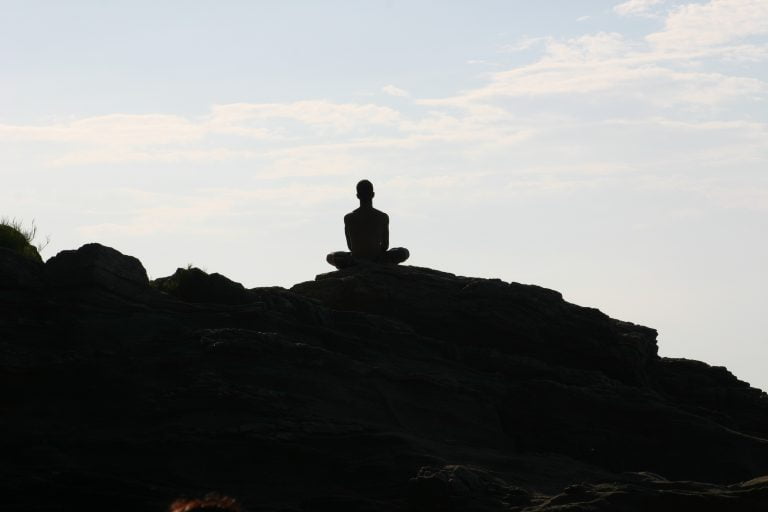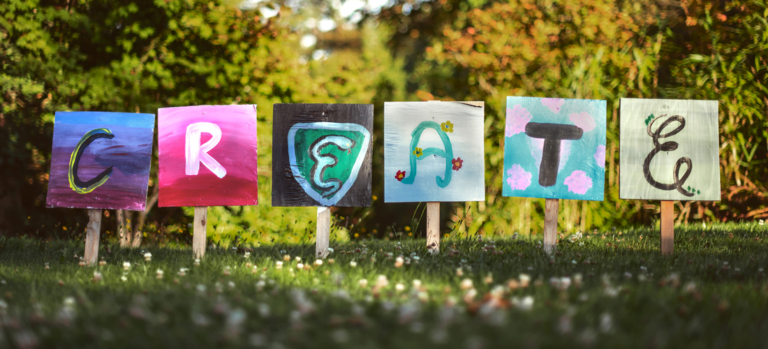In today’s hectic world, it can be difficult to find moments of peace and solitude. But spiritual solitude is an important practice for many people who are looking to connect with a higher power or their inner selves. It involves spending time in quiet reflection and contemplation, allowing yourself to become free from the hustle and bustle of everyday life.
In this blog post, we will explore what spiritual solitude is and how it can help us on our journey of self-discovery. We’ll look at some tips for fostering a deeper sense of connection with ourselves through the practice of spiritual solitude. By taking these steps, you may find that your relationships with yourself as well as others deepen significantly over time.
What is Spiritual Solitude?
Spiritual solitude is taking time away from the hustle and bustle of everyday life to connect with your inner self. It’s a way to nurture yourself spiritually, whether it’s through spending time in nature, going on silent retreats or visiting sacred places. How often and how long you take time alone is up to you – it all depends on what works best for you. Spiritual solitude can help give you a deeper understanding of yourself, your spiritual path and the world around you.
Spiritual solitude is not about loneliness or isolation; rather, it is a purposeful and enriching experience that allows individuals to explore their inner world and develop a deeper understanding of their spiritual path. In summary, spiritual solitude is a deliberate and transformative practice that allows individuals to deepen their spiritual connection, gain self-awareness, and find inner peace amid the complexities of life.
Why Spiritual Solitude Matters in Our Modern Lives
Spiritual Benefits of Embracing Solitude
Embracing solitude can bring about a multitude of spiritual benefits. When you take time for yourself, it can bring you closer to the spiritual world. It can make you feel more peaceful and fulfilled. Spend some time alone and discover a deeper sense of purpose!
1. Enhanced Self-Awareness
When you’re alone, it can help you become more aware of who you are. Solitude gives you a chance to disconnect from what’s around you and focus on yourself. You can do things like meditate, pray, or reflect on your life without being bothered by anyone else. Taking a break from the outside world helps you observe your thoughts, feelings, and goals more deeply. You can learn more about how you act and think as well as recognize what makes you strong or weak. It also helps to understand why certain things matter to you.
2. Deeper Connection with the Divine
When you spend time alone in solitude, it can help you build a special connection with the divine. You can create a sacred space and explore your inner self for spiritual growth and understanding. Solitude gives you a chance to focus on yourself and open up to connecting with something bigger than yourself. This connection might give you a deeper sense of purpose, joy, and alignment with life’s mysteries.
You can explore your inner self when you’re alone and learn more about what you want spiritually. This will help you feel closer to the divine. Also, use this time by yourself for special rituals and ceremonies that matter to your spiritual journey. They can be a way of communicating with the divine and make you feel connected to something sacred.
3. Spiritual Insights and Intuition
When you are alone, it can be a time to explore yourself in a deeper way. You may be able to notice things that you would not have noticed in the busyness of life. You might even get spiritual messages or insights about life, personal growth, or the connection between all things. Solitude can also help your intuition – being able to understand things without using your brain – and help guide you on the right path. It can be a time to heal, reflect, and gain clarity. So don’t be afraid of being alone – it can be an empowering experience!
4. Emotional Healing and Renewal
When you are alone, it is the perfect time for you to think about your feelings without any disruptions or pressure from others. Take this chance to think deeply and work through any unresolved issues or traumas. Give yourself the time and space to heal so that you can experience emotional renewal and find peace within yourself. Don’t be afraid of your emotions – embrace them without judging or suppressing them so that you can release all of your negative energy. This will help you understand why certain feelings come up and begin the journey of healing.
5. Transcendence and Unity
When you’re alone, you can have moments where you feel connected to something bigger than yourself. This is called transcendence. It means that even though you’re just one person, you are part of the universe and everything in it. You can also experience unity consciousness, which means that all living things are connected and share a common essence. When this happens, it can make you feel awe and wonder for life around you and help give your life purpose and meaning. Transcendence and unity can be experienced in moments of solitude, allowing you to experience a deeper connection with the world around you.
In this state of transcendence, individuals may also gain insight into their true selves and create meaningful connections that span beyond physical boundaries. By understanding our own individual identity within the context of something greater than ourselves, we are better equipped to make positive changes in our lives and become emotionally resilient. Solitude gives us an opportunity to explore these deep connections within ourselves and allows us to live more authentically as part of a larger whole.
6. Deepening Spiritual Practice
Being by yourself can help you get deeper into your spiritual practice. You can put all your energy and attention into praying, meditating, or other spiritual rituals without any distractions. Spending time alone helps you explore yourself more deeply, which will help you grow spiritually and learn more about who you are. Plus, being alone creates a sacred atmosphere that makes it easier to feel connected to the divine world and align with what you believe spiritually. This can give you a strong sense of respect for yourself and bring peace to your life.
7. Inner Strength and Resilience
Solitude can lead to the development of inner strength and resilience. When you take the time to be alone, it can help you become stronger. You will face your inner challenges and struggles without the influences or distractions of others. Solitude also helps with healing old hurts and traumas which leads to personal growth and emotional strength. Through this process of introspection and self-confrontation, you will develop inner strength and resilience.
8. Gratitude and Appreciation
Being alone can help you feel thankful for the things around you. You can focus on the present and appreciate the small things like nature, sunshine, birds, and peaceful moments. It’s an opportunity to think about how much your family and friends mean to you. You might also be grateful for how much you have learned from difficult times in your life and all that it has taught you. In this way, solitude can help to bring out a sense of gratitude and appreciation.
9. Authenticity and Personal Growth
Solitude is a great way to get in touch with yourself. When you’re away from other people and the things they expect of you, it’s easier to think about who you really are and what matters to you. You can be honest about your thoughts, feelings, and beliefs without worrying what anyone else will think.
Exploring your own feelings can help you understand your values, passions, and goals better. It can also help you identify areas for improvement in your life and develop positive habits. Plus, being alone can give you spiritual insights that will bring clarity to what direction in life is right for you. This connection helps make sure that whatever decisions or choices that come up align with the spiritual principles that guide your life.
10. Freedom from External Validation
When you’re alone and away from others, it can help you to be free of the need for approval. You don’t have to follow the same rules or beliefs as everyone else. You can learn more about yourself and your spirituality without worrying about what other people think. Being alone gives you a chance to find out what is true for you and make decisions that are right for you. It’s also a great way to get closer to yourself and feel more content with who you are – no matter what anyone else says!
Embracing Spiritual Solitude: Practices and Techniques
When embracing spiritual solitude, individuals can utilize various practices and techniques to deepen their connection with themselves and the divine. Remember that embracing spiritual solitude is a personal journey, and you can tailor these practices and techniques to suit your unique preferences and beliefs. The key is to approach solitude with an open heart and a willingness to explore the depths of your spirituality.
Meditation
Choose a quiet and comfortable space where you won’t be disturbed during your meditation practice. Decide on the duration of your meditation. Start with a manageable timeframe, such as 10-15 minutes, and gradually increase it as you become more comfortable with the practice. Sit in a comfortable position, with your spine straight but relaxed. Rest your hands on your lap or place them in a meditation mudra if you prefer.
Begin by focusing your attention on your breath. Observe the natural rhythm of your breath as it moves in and out of your body. Allow your breathing to guide you into a state of relaxation and presence. As you meditate, thoughts and distractions may arise. Instead of resisting them, acknowledge their presence and let them pass without judgment. Bring your focus back to your breath whenever you catch yourself getting carried away by thoughts.
Gradually, your mind will start to settle, and you may experience moments of increased clarity and stillness. Embrace these moments and allow your awareness to deepen. As you continue to meditate, use this space of solitude to connect with your spiritual essence. This might involve repeating a mantra, visualizing a sacred symbol, or simply being present with your inner self and the divine.
When your meditation time is complete, take a moment to express gratitude for the opportunity to connect with your spiritual self. Take this feeling of gratitude and carry it with you throughout the day.
Prayer
Begin by setting a clear intention for your prayer session. Reflect on what you seek to communicate or experience during this time of solitude and connection with the divine. Choose a serene and quiet space where you can be alone and undisturbed. This could be a dedicated prayer corner, a natural setting, or any place that feels sacred to you. Take a few deep breaths to center yourself and bring your attention to the present moment. Let go of any distractions and worries, allowing yourself to be fully present with your intention for prayer.
Decide on the form your prayer will take. It could be spoken words, silent contemplation, written reflections, or a combination of these. Use the form that resonates most with you. Start your prayer with an expression of gratitude. Acknowledge the blessings and experiences in your life that you are thankful for, fostering a sense of appreciation and connection. Share your thoughts, emotions, and desires with the divine. Speak from the heart, expressing your hopes, fears, joys, and sorrows. Be authentic and genuine in your communication.
After expressing yourself, spend some time in silence, allowing yourself to listen for any response or guidance from the divine. Be open to receiving insights and intuitive messages. Offer prayers and positive intentions for yourself, loved ones, and the world. Focus on sending love, healing, and peace to those in need. If you have specific questions or seek guidance, ask for clarity and wisdom during your prayer. Be open to receiving answers in unexpected ways.
Conclude your prayer session with another expression of gratitude, thanking the divine for the opportunity to connect and communicate. After your prayer, take a few moments to reflect on any insights or emotions that arose during the practice. Consider writing these reflections in a journal if you wish to capture them.
Journaling
Choose a quiet and comfortable space where you can be alone with your thoughts and feelings. Create an environment that feels safe and conducive to introspection. Before you begin journaling, set an intention for your practice. Decide on the focus of your journaling session, such as exploring your spiritual journey, seeking guidance, or processing emotions. Begin your journaling session with an expression of gratitude.
Write down things you are thankful for, both in your spiritual life and personal experiences. This sets a positive and appreciative tone for your journaling practice. Allow your thoughts and feelings to flow freely onto the pages of your journal. Write without judgment or censorship, letting your innermost thoughts come to the surface. Use your journaling time to explore your spiritual experiences and insights.
Reflect on moments of connection with the divine, meaningful synchronicities, or spiritual teachings that have impacted you. If you have been facing challenges or emotional struggles, use journaling as a tool to process and release these feelings. Write about your emotions, the underlying causes, and any lessons you can learn from them. If you have questions or seek guidance, write them down in your journal. Allow yourself to explore these questions openly, trusting that answers or insights may arise during your journaling practice.
Journal about your spiritual progress and personal growth. Celebrate your achievements and acknowledge areas where you can continue to evolve and deepen your spiritual practice. Write down your intentions for your spiritual journey and personal development. Clarify what you wish to cultivate or manifest in your life. End your journaling session with another expression of gratitude. Acknowledge the process of self-reflection and the opportunity for spiritual solitude.
From time to time, review your journal entries. Use this practice to gain insights into patterns, progress, and the evolution of your spiritual journey.
Visualization
Find a quiet and comfortable space where you won’t be disturbed. Sit or lie down in a relaxed position, and take a few deep breaths to center yourself. Close your eyes and let go of any distracting thoughts or worries. Create a mental space of stillness and openness. Begin to visualize a serene and sacred place that holds special significance for you. This could be a peaceful garden, a mountaintop, a beach, or any place that evokes a sense of tranquility and spirituality.
As you visualize, engage all your senses. Imagine the colors, textures, scents, and sounds of your chosen place. Allow the imagery to become vivid and immersive. In this sacred space, invite a spiritual presence that resonates with your beliefs. It could be a deity, a spiritual guide, or a representation of the divine. Imagine this presence appearing before you or enveloping you in its loving energy. Use this visualization to seek guidance, healing, or answers to any spiritual questions you may have.
Engage in a conversation with the spiritual presence, asking for insights or clarity on your path. Take a moment to express gratitude for this spiritual encounter and for the guidance and support you receive during the visualization. Set clear intentions for your spiritual journey or personal growth. Affirm these intentions to the spiritual presence and the universe. Feel the loving and supportive energy of the spiritual presence infusing your being. Allow this energy to nurture and uplift you during your spiritual solitude.
When you feel ready, slowly bring your awareness back to the present moment. Open your eyes and take a few deep breaths to ground yourself. After your visualization, take some time to reflect on the insights and emotions that arose during the practice. Consider writing down your experiences in a journal to capture the essence of your spiritual solitude.
Sacred Reading
Sacred reading, also known as spiritual reading or contemplative reading, is a technique in practicing spiritual solitude that involves immersing oneself in sacred texts, spiritual literature, or philosophical writings. Select sacred texts, spiritual books, or writings that align with your beliefs and resonate with your spiritual journey. These could include religious scriptures, philosophical teachings, poetry, or inspirational books. Create a peaceful and quiet environment where you can read without distractions.
Choose a comfortable place that allows you to focus on the sacred reading material. Before you begin reading, set an intention for your sacred reading practice. Decide on the theme or aspect of your spiritual journey you wish to explore through the chosen texts. Take a few moments to center yourself with mindful breathing. Let go of any external concerns and bring your full attention to the present moment.
Start reading your selected sacred text slowly and reflectively. Absorb each word and sentence, allowing the wisdom and insights to resonate within you. Pause at key passages or verses that particularly speak to you. Contemplate their deeper meaning and relevance to your life and spiritual journey. As you read, ask yourself questions about the text’s implications and how it applies to your life.
Consider how the insights can guide your spiritual growth. Keep a journal nearby to jot down any reflections, questions, or emotions that arise during your sacred reading. Write down any insights or inspirations you gain from the text. If the text is complex or deeply meaningful, consider reading it multiple times to deepen your understanding and connection with the material.
After your sacred reading session, take a moment to express gratitude for the wisdom and spiritual nourishment you received from the texts. Take the insights and lessons gained from your sacred reading and apply them to your daily life. Consider how you can integrate these teachings into your actions and interactions.
Nature Connection
Seek out a natural setting that resonates with you—a park, a forest, a beach, or any place in nature where you can be surrounded by trees, plants, water, or open space. Arrive at your chosen location with a sense of presence and mindfulness. Take a few moments to breathe deeply and become fully aware of your surroundings. Engage your senses to connect with nature deeply. Notice the colors, textures, scents, sounds, and temperature of the environment.
Take a slow, solitary walk through nature. Allow yourself to move at a leisurely pace, absorbing the beauty and serenity around you. Pay attention to the intricate details of nature—the patterns on leaves, the ripples on water, the shapes of rocks. Marvel at the wonders of the natural world. Embrace a sense of oneness with nature. Recognize that you are an integral part of the interconnected web of life, and feel a deep connection with all living beings.
Find a comfortable spot to sit or stand and meditate in nature. Use the sounds of birdsong, rustling leaves, or the gentle flow of water as focal points for your meditation. Take a moment to express gratitude for the beauty and abundance of nature. Acknowledge the role of nature in sustaining and nourishing all life on Earth.
After spending time in nature, take out your journal and write about your experience. Reflect on the insights, emotions, and sensations that arose during your nature connection practice.
Gratitude Practice
Gratitude practice in solitude helps you shift your focus from what you lack to what you have, fostering a greater sense of contentment and abundance in your spiritual journey. Embrace this practice as a way to deepen your connection with the divine and find joy and fulfillment in the present moment during moments of spiritual solitude.
Choose a peaceful and quiet space where you can be alone and undisturbed. This allows you to fully immerse yourself in the practice of gratitude. Take a few deep breaths to center yourself and bring your focus to the present moment. Let go of any distractions or concerns, and fully engage in the practice.
Begin by reflecting on the blessings and positive aspects of your life. Acknowledge the people, experiences, and things that bring joy, love, and fulfillment. Verbally or mentally express gratitude for each blessing. Say “thank you” in your mind or out loud, acknowledging the impact and significance of each blessing. As you progress, delve deeper into your gratitude practice. Acknowledge not only the obvious blessings but also the challenges and lessons that have helped you grow and learn.
Consider keeping a gratitude journal during your solitude practice. Write down the things you are thankful for, the feelings they evoke, and how they contribute to your spiritual journey. Use gratitude affirmations to reinforce your practice. Affirmations like “I am grateful for all the abundance in my life” or “I embrace each day with a heart full of gratitude” can enhance your connection to gratitude.
Extend your gratitude practice beyond your immediate life. Acknowledge the beauty of nature, the kindness of strangers, and the interconnectedness of all beings. Incorporate a gratitude meditation into your solitude practice. Focus on feelings of gratitude in your heart and let this emotion radiate throughout your being.
As you conclude your gratitude practice, aim to carry the sense of gratitude into your daily life. Embrace a grateful mindset in your interactions and actions. Make gratitude practice a regular part of your spiritual solitude. Set aside time daily or weekly to engage in this transformative practice.
Creative Expression
Creative expression in solitude allows you to access a deeper layer of self-awareness, explore your spiritual journey, and communicate with the divine through the language of art. Embrace this practice as a means to discover new aspects of yourself and connect with the profound and mysterious elements of your spiritual path.
Find a quiet and comfortable space where you can engage in creative expression without distractions. Make this space your sanctuary for exploration and self-expression. Before you begin your creative expression, set an intention for your practice. Decide on the emotions, ideas, or spiritual themes you wish to explore through your art. Select a creative medium that resonates with you and aligns with your artistic preferences. It could be drawing, painting, writing, music, dance, poetry, photography, or any other form of art.
Let go of self-judgment and allow your imagination to flow freely. Allow your thoughts and emotions to guide your creative process without inhibitions. Use your chosen medium to express your inner world. Let your emotions, spiritual experiences, and insights come to life through your creative expression. Engage in your creative expression as a form of meditation. Let go of time and immerse yourself fully in the process, being present with each stroke, word, or note.
Once you’ve completed your creative expression, take a moment to reflect on the art you’ve created. Consider the emotions and messages it conveys and how it connects to your spiritual journey. Embrace imperfection in your art as a natural part of the creative process. Allow yourself to learn and grow from each creative expression.
Use your art as a tool for introspection and self-discovery. Look at your creations as mirrors reflecting your inner self, offering insights into your spiritual path. Make creative expression a regular part of your spiritual solitude practice. Dedicate time to engage in artistic expression, fostering a deeper connection with your inner self and spirituality.
Forgiveness Practice
Forgiveness practice is a transformative technique in practicing spiritual solitude that involves letting go of past grievances, releasing emotional burdens, and fostering inner peace and healing. Embrace this practice as a means to lighten your emotional load, cultivate compassion, and foster inner peace during moments of spiritual solitude.
Choose a peaceful space where you can be alone with your thoughts and emotions. This environment allows you to delve into the forgiveness process without distractions. Take a few deep breaths to center yourself and bring your awareness to the present moment. Let go of any tension or preoccupations, and create a sense of inner calm.
Begin by reflecting on past hurts or grievances that you are holding onto. Identify the people, situations, or events that have caused you pain. Allow yourself to feel the emotions associated with these past hurts. Be honest and compassionate with yourself as you confront these feelings. Extend self-compassion to yourself for carrying these emotional burdens. Recognize that it is okay to feel hurt and that forgiveness is a healing process. Try to understand the perspectives of those who have hurt you. Empathize with their circumstances and recognize that everyone carries their own struggles.
Make a conscious decision to forgive those who have caused you pain. This doesn’t mean condoning their actions, but rather, choosing to release yourself from the grip of resentment. Visualize letting go of the emotional attachments to these past hurts. Imagine them dissipating and dissolving, leaving you with a sense of freedom.
Engage in a forgiveness meditation, where you offer forgiveness to others and to yourself. Focus on sending love and healing to all parties involved. Recognize that forgiveness is a gift you give to yourself. By releasing past grievances, you open up space for healing, growth, and a more peaceful existence.
After your forgiveness practice, take some time to journal about your feelings and insights. Writing can help solidify the healing process. Forgiveness is a continuous practice. Repeat this forgiveness technique regularly, as new emotions and memories may arise over time.
Closing Thoughts
Finding spiritual solitude is a powerful tool for developing inner strength and resilience. In this blog post, we explored various methods of achieving it such as meditation, gratitude practice, journaling, and more. Whether you choose to practice one or all of these techniques – the most important thing is that you make time in your life for yourself every day so that you can enjoy moments of peace and tranquility within. By doing this regularly, you will be able to cultivate an unshakeable sense of self-confidence and joy even during difficult times. So go ahead: take some time each day for yourself – your spirit will thank you!

